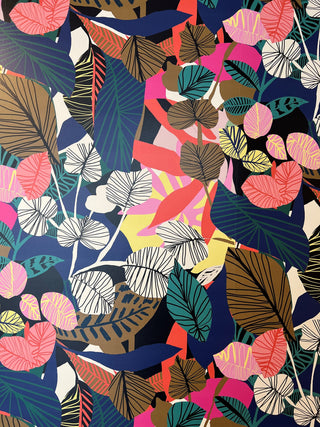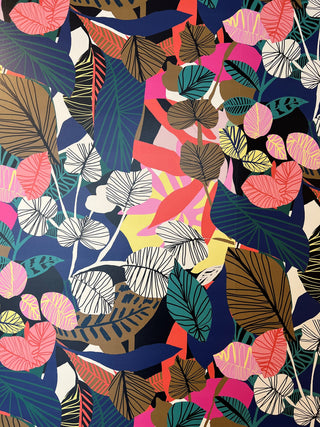I grew up in the jewelry industry - literally! I am a second generation jeweler, my dad had stores during the time I was growing up. One of my most vivid childhood memories is playing “Jewelry Store” with my best friend Leah. We would haul out either my mom’s or her mom’s jewelry box and sell each other sparkling rings, pearl necklaces and yellow gold chains. I loved it. I still do! To this day being a trusted advisor to my clients on big purchases like diamond engagement rings, wedding rings and precious stones gives me such joy. I have been asked every question there is! But this article is to share with you the top 10, the FAQ’s we get asked over and over. If you’re shopping for a loose diamond, diamond engagement ring or just have questions in general, this one’s for you.
-
Are diamonds really the hardest substance on earth?
Yes, diamonds are considered to be the hardest natural substance on Earth. The hardness of a substance is measured by the Mohs Scale. 10 is the hardest, and you guessed it: diamonds are a 10 on the Mohs Scale. This means that the durability of a diamond is excellent.
That being said, just because a diamond is hard, that doesn’t mean it is indestructible. Being that it is so hard, a diamond will break, chip or fracture before it will give. Diamonds can be broken or damaged by hard impact such as dropping onto a hard surface like tile or concrete.
-
What’s most important in the 4 C’s?
The answer to this question is what is most important to you? There is no right or wrong here only that some factors are going to be important to you and some aren’t. Here’s some things I’ve learned over the years:
Carat
Carat weight is probably one of the more universally important factors. Most people would rather have a larger diamond in their diamond ring than a smaller one. It’s crucial to note that carat is a unit of weight, not size. This means that you can line up ten 1 carat diamonds that are all round brilliant cut and they will all be different sizes and measurements. One of the reasons we recommend shopping for a diamond in person & not online!
Clarity
Clarity refers to in the natural inclusions that are in a diamond. The size, color, type and location of inclusions all have an impact on the look to our naked eye and therefore the price. The inclusions in some diamonds need magnification by a loupe to be seen and some can easily be detected with the naked eye. The latter would have less value, be priced for less. I’ve noticed that men tend to want a higher clarity grading in a diamond as they don’t love the idea that a diamond is flawed. They tend to equate a high clarity rating as equal to high diamond quality. While it is a component, it’s not the only factor!
Color
This is where men and women tend to diverge. Most women want a higher color grading than clarity grading as color is readily apparent to the naked eye. It’s obvious if a diamond has a tint of yellow & that’s what the color scale tells us: how much of a yellow tone a diamond will have. This is where diamond shape can help us! A round brilliant cut of the same color grading will appear whiter than a princess cut, or cushion cut diamond. This is because color is concentrated in the corners.
Cut
Cut grading is highly debatable as “the” most important C. Cut grading tells us how well a diamond is cut, does the light come back to our eye in sparkle, fire and scintillation. However, when rough diamonds are cut, the goal of most cutters is to maintain the highest weight, since diamonds are sold based on their carat weight. The higher the carat weight the more valuable the diamond.
What I’ve discovered is that one or more of these C’s may hold more value to the eye of the beholder. When the time is taken to visit a trusted jeweler and see these characteristics for yourself, you will have the peace of mind knowing you chose the best diamond for you.
-
Where are natural diamonds mined?
As you may already know, over millions of years, heat & extreme pressure in the earth’s surface (or crust) is what forms the diamond. Diamond mining is done in various locations all around the globe. Of note to us in Canada is the Ekati & Diavik mines in the Northwest Territories. Historically, the most plentiful and valuable pink diamonds have come from the Argyle mine in Australia (the mine has now run dry and is closed). And Botswana is one of the sources for the most high quality diamonds on earth.
-
How do I know if a diamond is conflict-free?
Since the movie (thanks Leonardo DiCaprio!) we often get asked about blood diamonds, or what the diamond industry refers to as conflict diamonds. This refers to when a natural diamond is obtained through proceeds of war, conflict and violence. Basically, unless a diamond is mined out of Canadian soil (in which case it is tracked the moment it is discovered), there is really no way of telling what area of the world it came from. There are various government processes (for example the Kimberley Process) that have been put in place in recent decades to protect human rights and prevent the sale of conflict diamonds. At Perrara, all of our vendors must guarantee their diamonds to be conflict-free. This is crucial to the transparency of our values.
-
Are lab grown diamonds the same as natural mined diamonds?
This is a whole big topic in and of itself! In fact we’ve dedicated an entire article just to this topic, we highly recommend you refer to it. But the in a nutshell answer is yes: lab grown diamonds have the same chemical and optical properties as natural mined diamonds but no: they do not hold the same value.
-
What is GIA?
GIA stands for the Gemological Institute of America. It is the most renowned and trusted laboratory for diamond grading. It’s role has been instrumental in developing a system to grade diamonds. As they come out of the earth, each unique, there had to be a standard in how to grade them. GIA gives us the scale for grading color, clarity and cut. A precious diamond (or gemstone) can be sent to GIA to be certified: skilled gemologists will certify factors like the cut, clarity, color, carat weight and other important characteristics unique to that particular diamond. They can also laser inscribe a serial number on the diamond that matches the grading report.
-
Which Diamond Shape is the Best?
Oh, now we’re having fun! Exploring various diamond shapes and their unique pros and cons is what makes our heart go pitty pat. We love to help you discover and try on lots of diamond shapes. We’ve dedicated a whole article to the diamond question “What is the best diamond shape for an engagement ring?” Round brilliant cut diamonds are the epitome of a classic shape. Marquise cut diamonds have a quiet elegance. Emerald cut diamonds handle light in a completely different way than say a radiant cut (although their overall shape is the same, the cutting style is totally different). We would love to show you these cuts in real life...seriously...just pop in for a try on session!
-
Do moissanites look just like diamonds?
So it’s vital to note that moissanite is a unique gemstone, not a synthetic diamond. Moissanite crystals are grown in a lab to create this specific gem. They do not have the same physical, chemical or optical properties as a diamond (or lab grown diamond). The most evolved moissanite from Charles & Colvard (which is the premier moissanite manufacturer) is called “Forever One” and it is actually more sparkly than a diamond, if you can imagine that! If you are interested in moissanite for your engagement ring, it will be well worth your while to compare a moissanite against a lab grown diamonds or natural mined diamonds to see the difference with your own eyes.
-
Can a diamond cut glass?
Yes, it can. A diamond is harder than glass and can definitely etch it. That being said, do not try this at home!!! Remember, a diamond is unyielding and subjecting it to this experiment at home is a no-no. You will be risking damage to your precious diamond and piece of jewelry.
-
Is the diamond size or quality most important?
Often times buying a diamond is about finding a balance between the size and quality of a diamond. A big factor may be your personal budget. As a diamond retailer our goal is to help you strike that balance and select a diamond that achieves your ultimate goal: to show her that she means the world to you.
In Summary:
Shopping for a diamond is an experience like no other. It can feel daunting but with the help of the right advisor, it should be a fun, intriguing and easy process. Let’s do it!
With Love, Perrara
Author: Lisa Maloney, Proprietor




